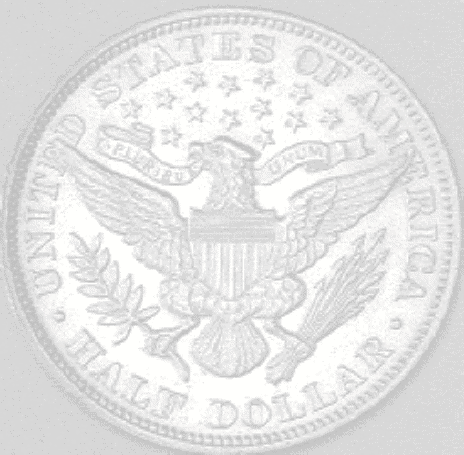
|
|
||
|
|
|
|
|
|
||

-12-
FOR BETTER OR WORSE:
The Confession of Salmon P. Chase
Four years after the War, in December 1869, Salmon P. Chase publicly admitted his errors. Now as a Supreme Court Justice, he declared in Hepburn vs. Griswold,
The making of notes or bills of credit a legal tender is not a means appropriate, plainly adapted, or really calculated to carry into effect any express power vested in Congress, is inconsistent with the spirit of the Constitution, and is prohibited by the Constitution (White, 231-32).
He went on record saying,
Examination and reflection have satisfied me that this opinion (referring to his approval of the Legal Tender bill in 1862) was erroneous and I do not hesitate to declare it . . . .The legal tender quality was only valuable for purposes of dishonesty (White, 165).
Julliard vs. Greenman
In December the following year (1870), the Supreme Court reversed its decision. Justice Grier had resigned and was replaced by Justice William Strong. In addition, a new member had been added: Justice Bradley. Justice Strong delivered the opinion that "value is an ideal thing" (White, 232-33). If value is regarded as relative, it is little wonder that in March 1884, in Julliard vs. Greenman, the Supreme Court Justices held that Congress has the Constitutional power to make United States Treasury notes legal tender (White, 233). Justice Horace Gray erroneously declared,
The power as incident to the power of borrowing money and issuing bills or notes of the government for money borrowed, of impressing upon those bills or notes the quality of being a legal tender for the payment of private debts was a power universally understood to belong to sovereignty in Europe and America at the time of the framing and adoption of the Constitution of the United States (White, 234).
George Bancroft referred to this statement in a pamphlet he published the same year. It was entitled, "The Constitution Of The United States of America, Wounded In The House Of Its Guardians." In it, he labeled the statement by Justice Gray "a stupendous error” (White, 149).
United States Notes
On February 6, 1862, by a vote of 93 to 59, the Legal Tender bill cleared the House. It narrowly escaped defeat in the Senate when it received a vote of 22 to 17. On February 28th it became "law" and provided for the issuing of 150,000,000 "dollars" in paper "money." On June 7th, Mr. Chase requested an additional 150,000,000 "dollars." "Legal Tender Notes" also known as "United States Notes" carried the same green reverses as the old Demand Notes, and the popular name "Greenbacks" was continued. A third issue calling for an additional 100,000,000 "dollars" was authorized by the Act of January 13, 1863.
Compound Interest Treasury Notes
Two amendments were attached to the Legal Tender bill. One required the government to pay in coin the interest accrued on its loans. The other authorized the Secretary of the Treasury to issue bonds at any time at 6 percent interest. Therefore, by the Act of March 3, 1863, Compound Interest Treasury notes were issued. They were redeem-able after 3 years, and like the Interest-Bearing Notes before them, their interest was collectable at 6 -month intervals. A Second issue was authorized by the Act of June 30, 1864. A total of 226,000,000 "dollars" of these Treasury notes was authorized. When people balked at accepting the bonds, Secretary of Treasury Chase threatened that if he could get money in no other way, he would flood the country with so many "Greenbacks" that a breakfast would cost 1000 "dollars” (Halleck, 394).
Repudiation of Gold-Interest Bonds
The Act of March 3, 1863
not only authorized the Compound-Interest notes. Legal Tender notes had
been converted into 6 percent gold-interest bonds at par. This contract
with the American people was printed on the reverse of each note. By
this Act in 1863, less than one year after the pledge was made, Mr.
Chase abolished it. He stated his reason was to reduce the rate of
interest on future issues of bonds. Congress reluctantly agreed and
fixed the period of redemption as ending July 1st.
